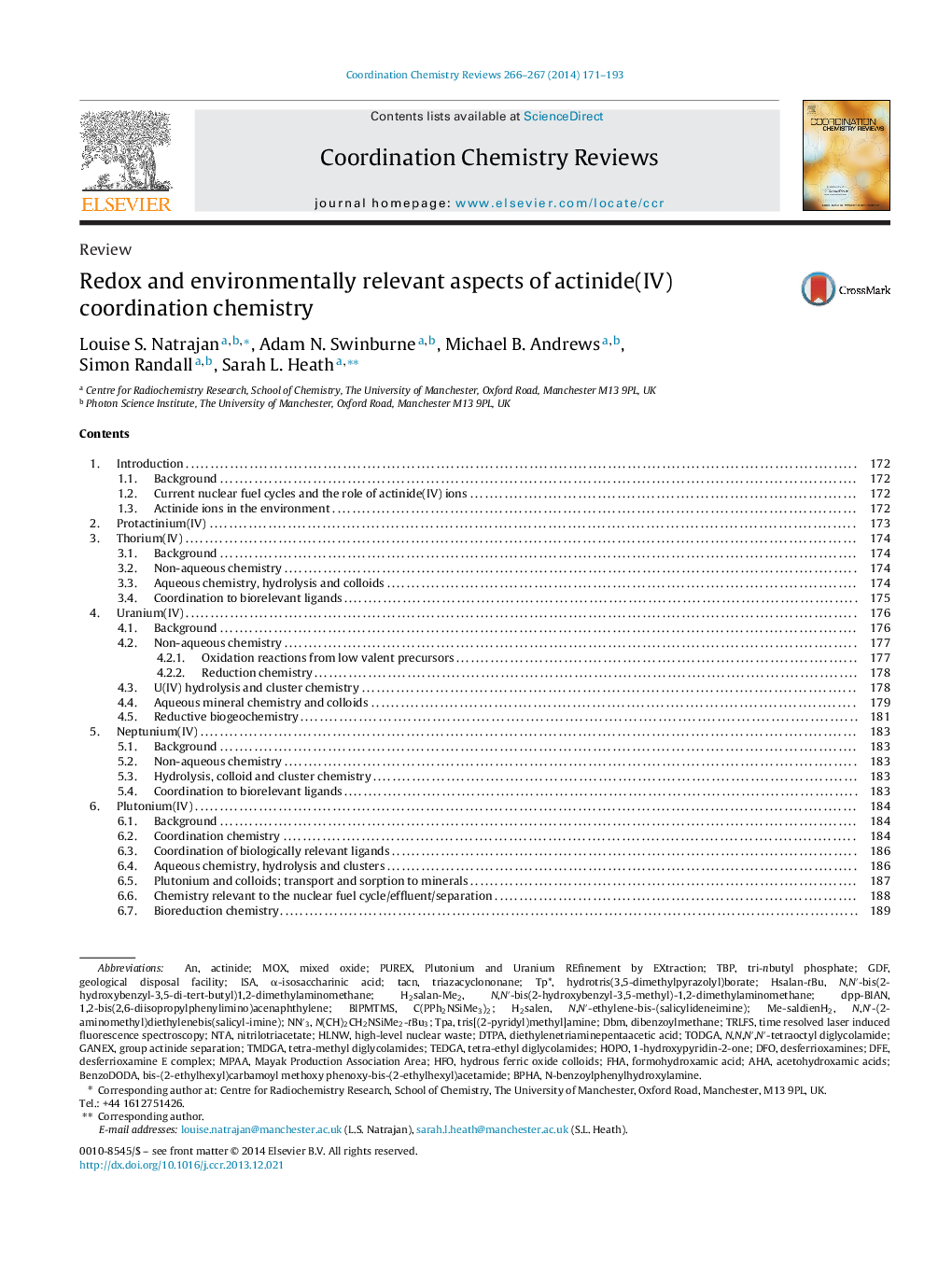| Article ID | Journal | Published Year | Pages | File Type |
|---|---|---|---|---|
| 1300338 | Coordination Chemistry Reviews | 2014 | 23 Pages |
The redox chemistry of the actinide elements plays a central role in many aspects of nuclear fission technology including the reprocessing of spent fuel, safe disposal strategies and in the ability to reliably predict the mobility of actinides in natural and engineered environmental conditions. In both aqueous and non-aqueous conditions, the redox chemistry of the actinides can be complicated and diverse and speciation is governed by both the actinide in question and many environmental factors. Although, historically, actinyl(VI) and (V) ions have been the subject of the most in depth research, the study of actinide ions in the +IV oxidation state (principally for U, Np and Pu) is inherently important in governing speciation in all aspects of the nuclear fuel cycle. Importantly, reactions involving reduction, disproportionation and re-oxidation tend to involve actinide ions in the +IV oxidation state leading to complex systems particularly in aqueous solution that control the solubility and migratory behaviour of actinide containing species. In this review, we focus on recent developments in the coordination and redox chemistry of the actinides involving actinide(IV) species in terms of fundamental coordination chemical studies, mineral chemistry, biogeochemistry and the implications of hydrolysis chemistry on the chemical and physical behaviour of actinide(IV) ions in the natural and engineered environment.
